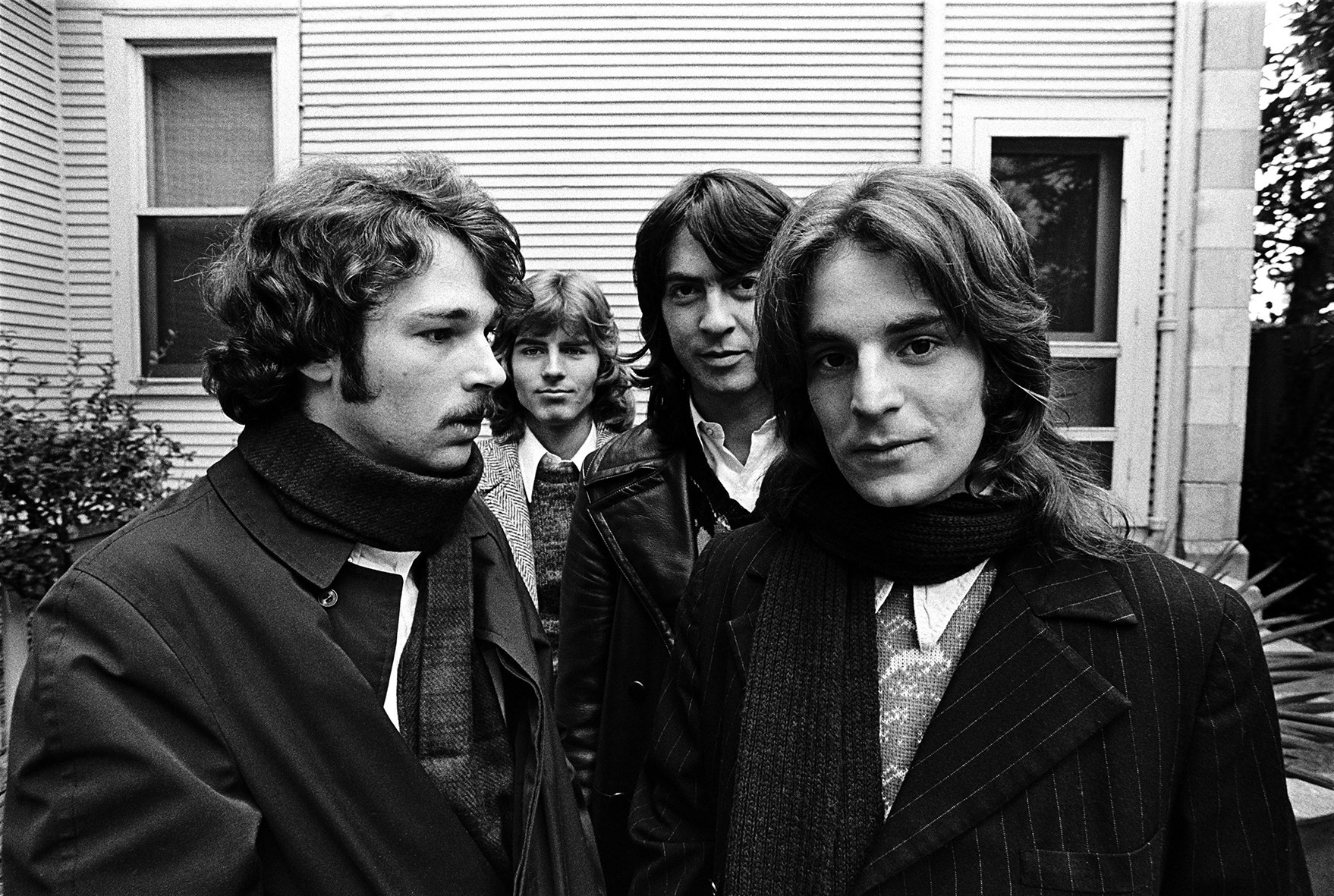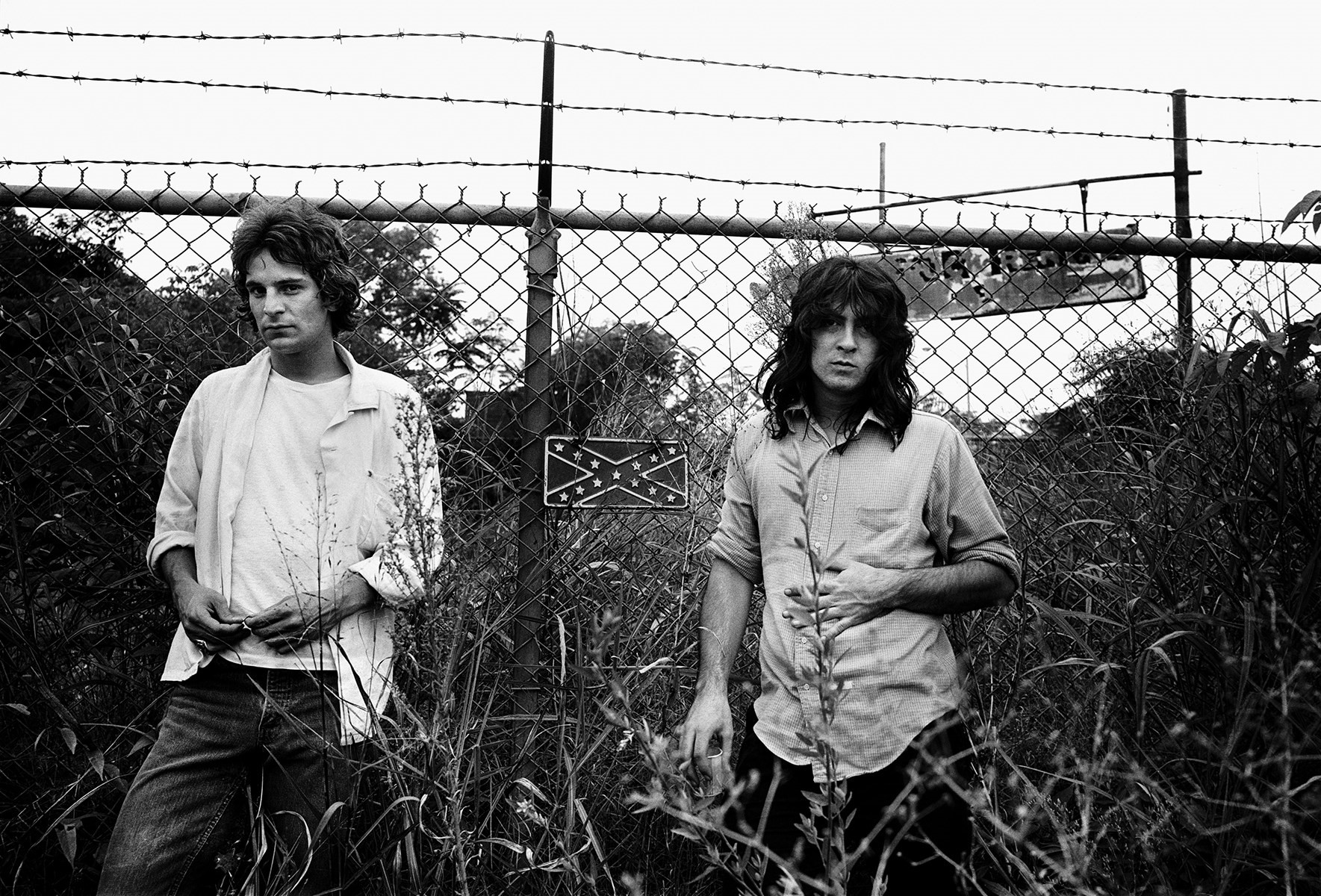The musical legacy of lauded 1970s Memphis band Big Star has been shown in documentary and echoed in the music of bands from REM and Teenage Fanclub up to today’s teenage beat-freaks the Lemon Twigs, but Isolated in the Light is the first photographic monograph to collect their visual history.
Spun from a five-year collaboration between photographer Donna Ranieri and art director Fabrice Couillerot, the collectable, limited-edition tome includes many images by legendary photographer William Eggleston – a friend of the band who used his famous Red Ceiling image for the cover of their second album – as well as pictures by Michael O’Brien, David Bell and other notable image-makers in the group’s orbit.
“These photographs to me are just incredible. They happen to be of a band, but they are, for me, first and foremost, really good photographs,” explains Donna, adding that the band’s tragic backstory adds another layer for her – Chris Bell died aged 27 in a car crash. “Some of them are very poignant to me and some of them show a lot of sadness or frustration. But for somebody that doesn't know that much about Big Star, I feel they could open this book and be taken by the beauty of these images.”

Roderick Stanley: When the music and legacy of Big Star has been well explored, why has their visual history not been collected until now?
Donna Ranieri: That's a good question and one that a lot of people have brought up. For Fabrice and I, because we both were so involved in music and photography, we both started discussing our appreciation and love of Big Star. It was then an easy thing, to say, why don't we do a monograph?
Fabrice Couillerot: Nobody else thought to do this. Maybe there was no publisher interested in doing a monograph on Big Star, because commercially it's perhaps not going to be a million seller!
DR: What we've done is really a labour of love. It's a limited edition of 1000. It's really just because we love the subject matter so much.
You're both fans of Big Star. When did you first discover the band and how did that become a part of your life and ultimately culminate in this project?
DR: Fabrice and I have come to Big Star in different ways. I went through my teens in the 1970s and prior to hearing Big Star, I was also a Box Tops fan – I was exposed to Alex Chilton at that period. When I was a kid, I had 45s of the Box Tops.
FC: In Europe, Big Star in the 80s were practically unknown until [indie label] 4AD… I was a teenager and I used to buy everything on it. In 1983, the boss of the label [Ivo Watts-Russell] decided to create a project called This Mortal Coil [studio project featuring legendary indie musicians of the time from the label, including Cocteau Twins, Pixies, Modern English and so on]. They did cover versions of Holocaust and Kangaroo. I became obsessed by those two songs, started researching them and that's how I discovered Big Star.
You share a love of the band, but from slightly different places and times. How did that relate to the way you approached the project?
DR: Once we bonded over the fact that we had strong feelings about the music, as you said, there's such a rich amount of imagery. We're both very savvy about photography. I do a lot of things with photography and Fabrice is a graphic designer.

Had you worked together before?
FC: I was working for big publishers, but they would reject my projects because they were not commercial enough! So, I decided to create my own company. I started with a book on a band called Felt. When I researched that, it happened that Donna had the biggest collection of photos on Felt. When I went to New York to meet with her, to pay for her photos, that's when we clicked and realized that we have so much in common.
Do you think you approached it differently because of your different relationships with the band?
FC: Maybe in terms of quotations. I was pushing the British side of the quotes, the 4AD side, and Donna was more pushing the American side of the quotes. It was complimentary actually.
DR: I already knew (drummer) Jody Stephens. I approached Jody first to get a feel if he would be open to the idea, and (producer) John Fry was still living at that time. He was very supportive, Jody.
What was that process like for you, being able to explore the history of a band that you loved in a direct way by talking to the people involved?
DR: We really wanted to showcase the photographers and tell the story of their relationship with these musicians who were probably around the same age at the time. What was it like to be in Memphis at that time and hanging out with these people and being there and taking photographs of them? I hope that Fabrice and I have been successful at really pushing that part forward, to tell the history through their eyes.
Why do you think this band is so immersed in photographic culture? Not all bands hang out with William Eggleston when they’re growing up.
DR: John Fry was kind of the ground zero in a weird way – not only were these people learning music production, and he would allow them to hang out and practice or use the studio, but they were also hanging out and taking pictures of each other. When Blow-Up [1966 British-Italian film directed by Michelangelo Antonioni about a fashion photographer, played by David Hemmings] was shown at a movie theatre in Memphis, they all freaked out and decided they wanted to be David Hemmings, which made me laugh because I grew up in Philadelphia and I remember that whole thing with Blow-Up and how cool it was... Most of them came from artistic backgrounds. For example, Alex Chilton’s mother had an gallery in Memphis, and the connection with William Eggleston happened because Alex's mother was really supportive of Eggleston at the beginning of his career.

Is this book strictly for Big Star fanatics or will it appeal to photography enthusiasts too?
DR: I hope it's for both. It's going to appeal quickly to people who are fans of Big Star, because they know the music. It's harder to reach out to a straight photography audience to get them to look at it if they don't know who the band is. Eggleston would draw people, because Eggleston is such a high profile artist. I hope that it appeals across the board to everybody and I know Fabrice feels the same.
Big Star are still an object of fascination today, even to a younger audience, who never could have known them first or second time round. What is it that still makes the band so alluring, both musically and visually?
FC: In the early 70s, everybody was into prog and they were very few bands doing that kind of music. That made them more special and the fact that they were so talented... and the vocals between Alex Chilton and Chris Bell, work so well.
DR: Also, the one thing that we haven't discussed is John Fry [founder of Ardent records]. What I find interesting is that maybe what you wouldn't see as much of today, is that John really mentored these guys. He allowed them to develop as a band and opened the gateway for them and was a guiding force. I think that's really hard... You don't see that as much anymore.

What is your photographic highlight from the book?
FC: I think mine would be a Chris Bell image, the one that closes the book, because I think it says so much about [pauses], he didn't have any more expectations. I think he thought it was over for many things. Laying his head on this table… He's resigned.
DR: Well, there are so many Eggleston images that I love but, there's a picture of Alex with his eyes closed and his hand up to his forehead. It's like a really psychological interior picture and I feel that that's very strong picture of Alex. Which one would it be for you?
I love the Eggleston ones in colour, of them partying somewhere. All of the colours and poses are fabulous. They seem so relaxed and natural, but they're all so beautifully composed as well. It's just that marriage of it being a beautiful photograph but also a fascinating subject.
DR: Yes, exactly! Good choice.
'Big Star: Isolated in the Light' is available in a limited edition run of 1000 copies, available to order from First Third Books.



